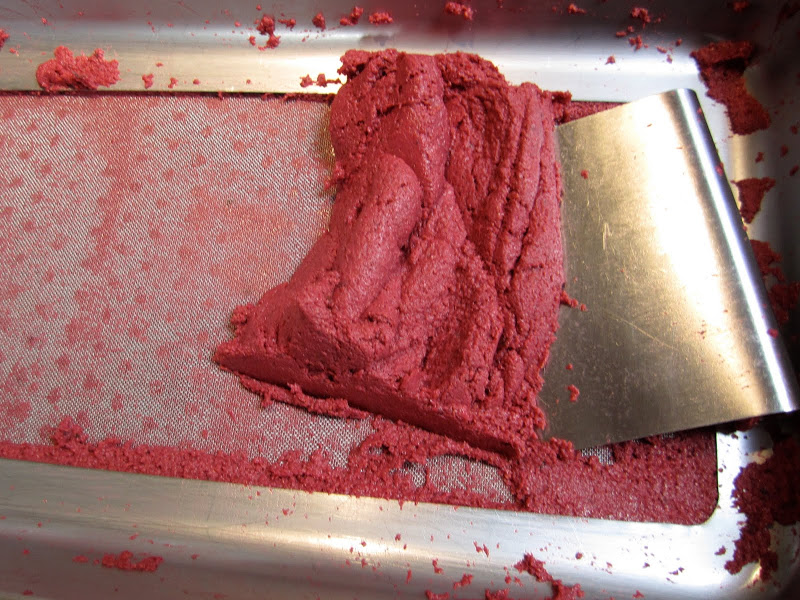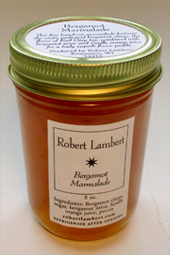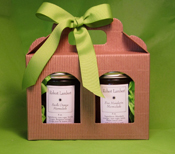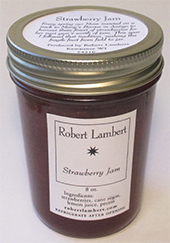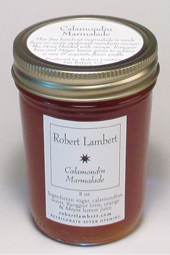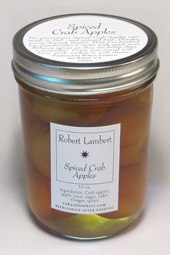Blog
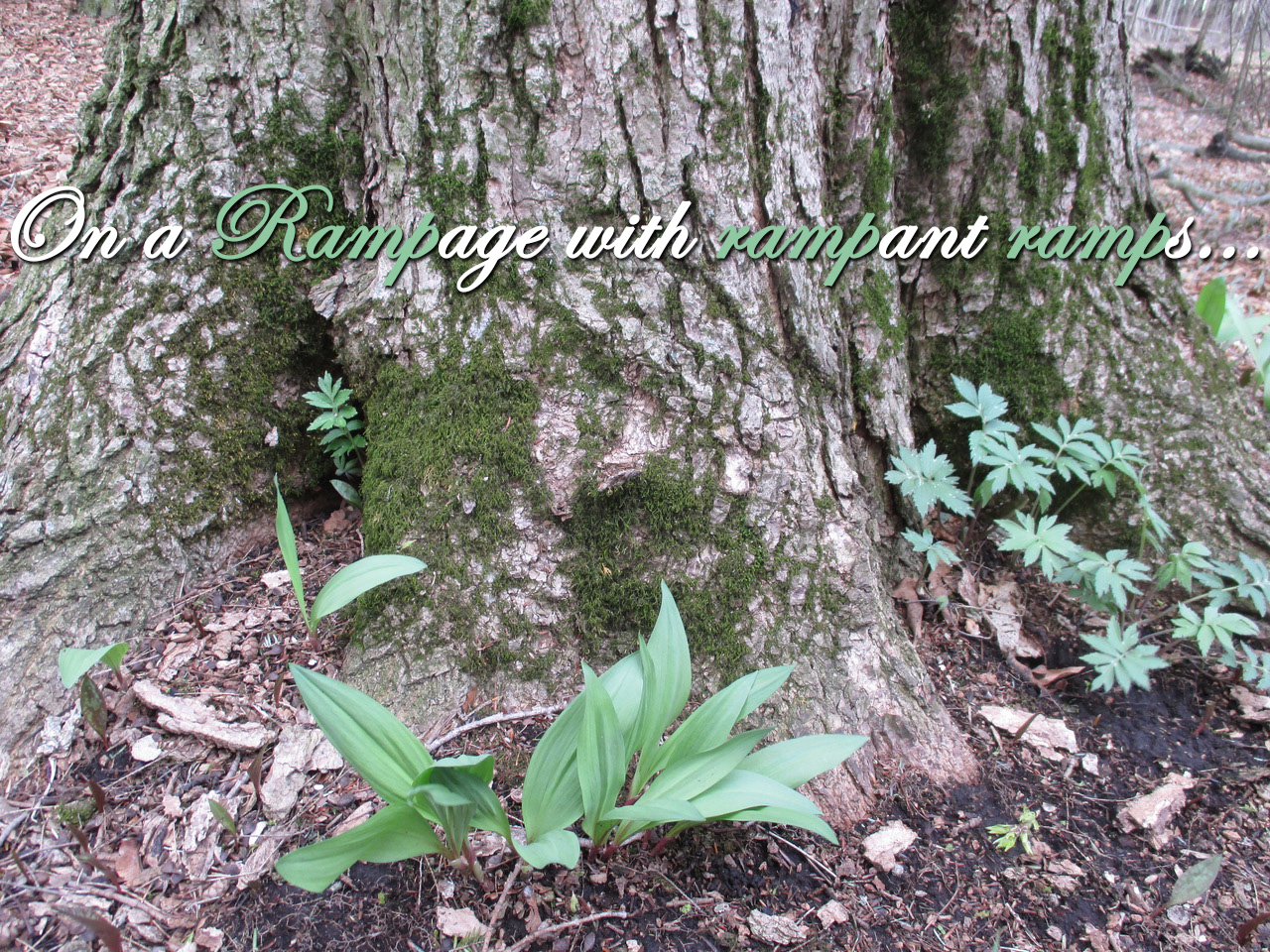
Local Wisconsin Delicacy #1: Spring Ramps
Ramps are wild onion-like perennials and grow in groups with their scallion-like bulbs firmly rooted beneath the soil. They favor sandy, moist soils and are often found near streams though you might also find them carpeting the forest floor where beech, birch, poplar and/or sugar maple trees are found - which describes my new property precisely. Early warm spell has made them pop and the vast swaths of silky green is a lovely surprise. I chose not to dig the bulbs to preserve them, the tops are milder and have a scallion/garlic/celery-like flavor, with other notes all their own. What to do with this treasure, with only 2 cooking pots as yet unpacked...

stock from 2 roasted chicken carcasses
2 leftover boiled russet potatoes, chopped
3 generous double handfuls of ramps, washed and cross-sliced
1 tsp. Profumo del Chianti herbed salt
Top with grated Parmesan, serve with crusty bread and Carmenet Chardonnay
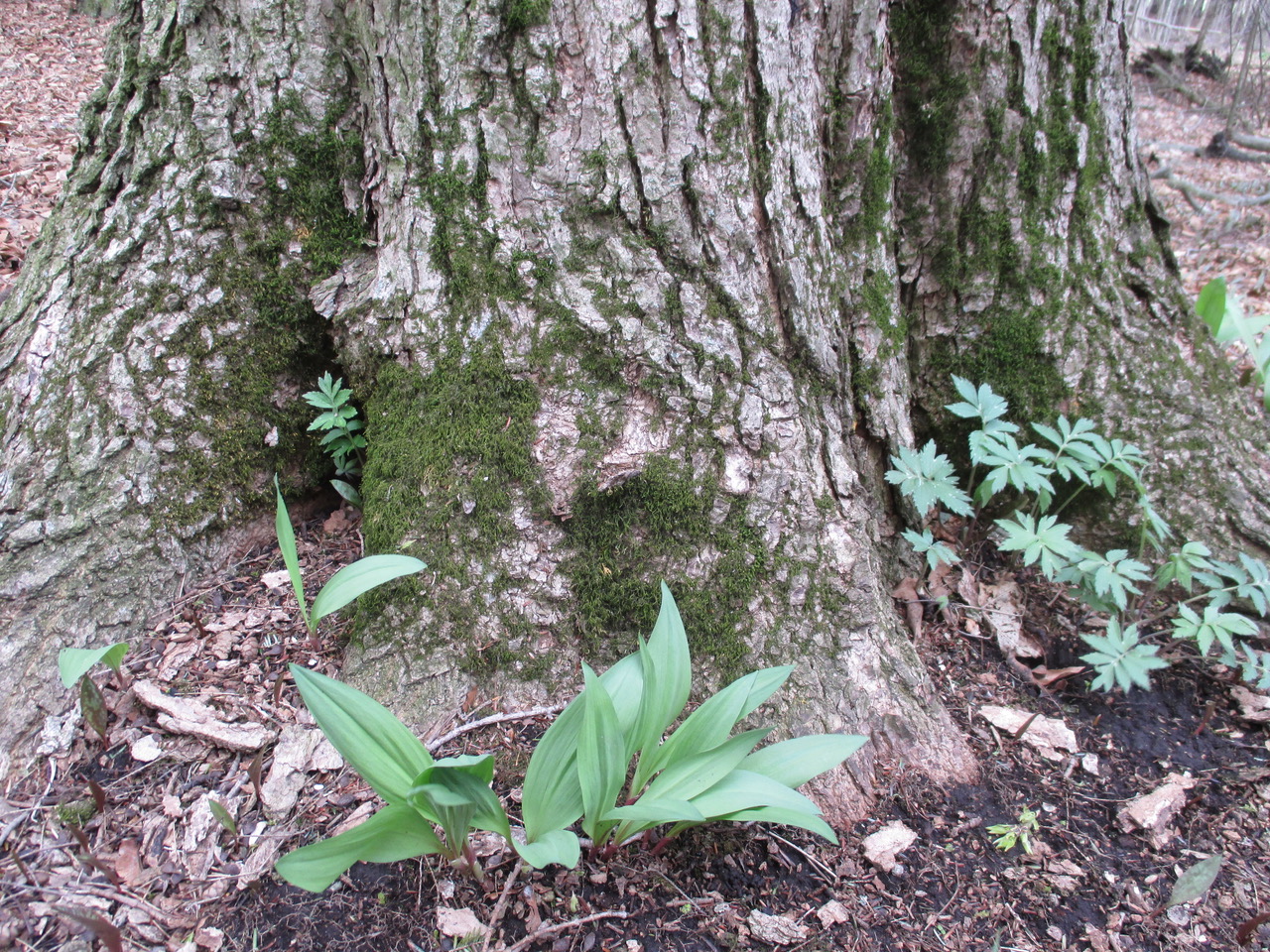
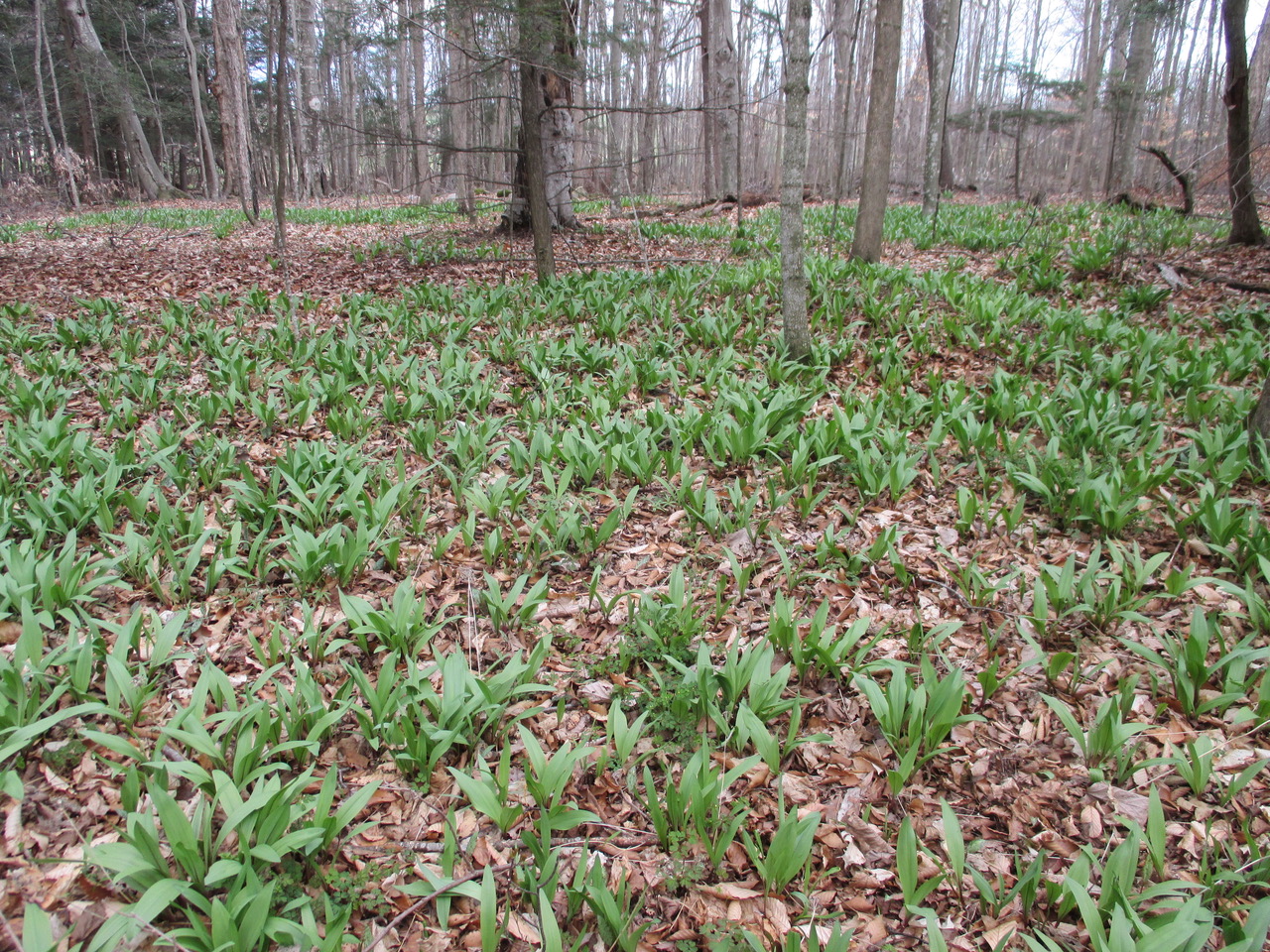
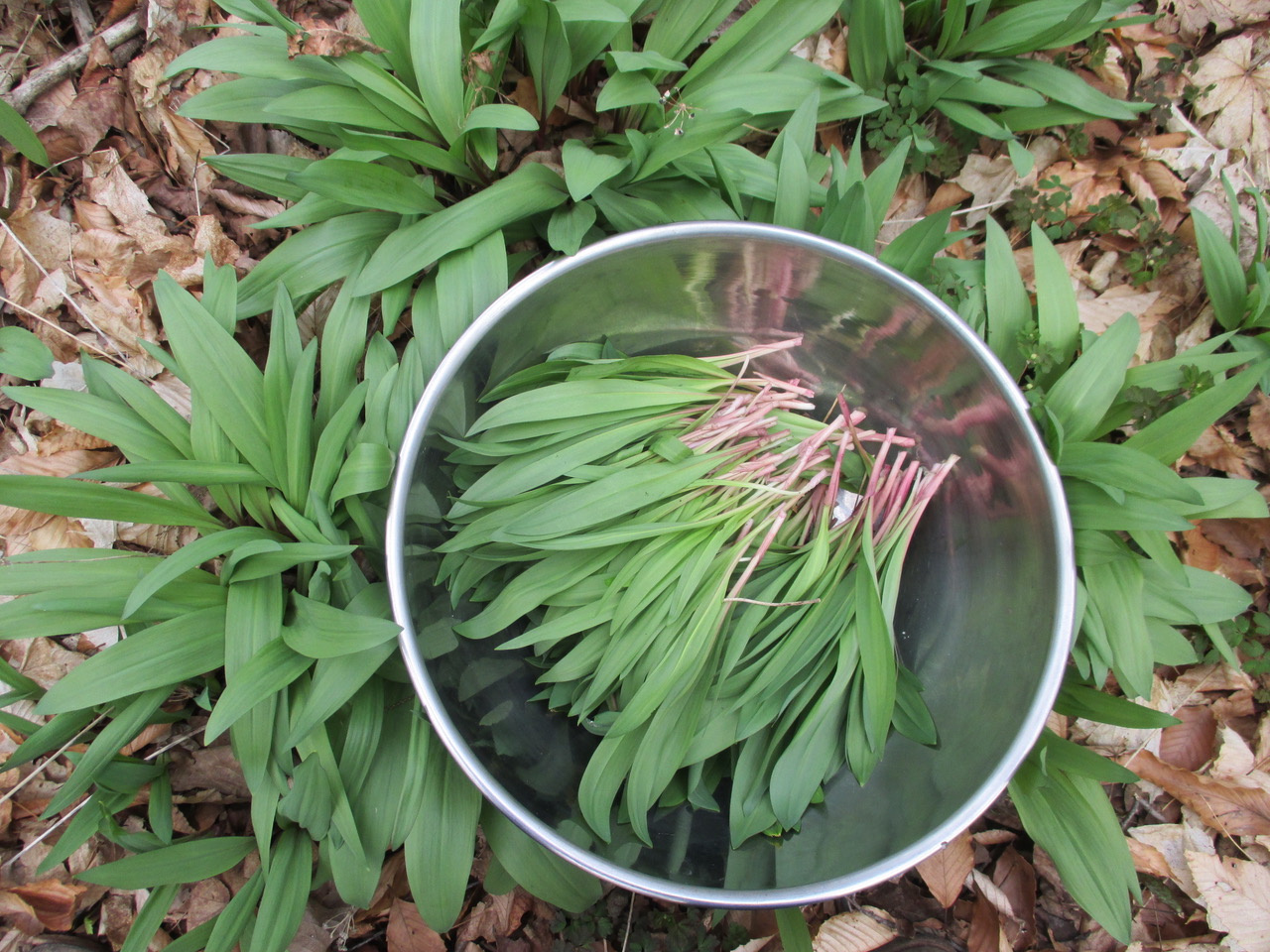
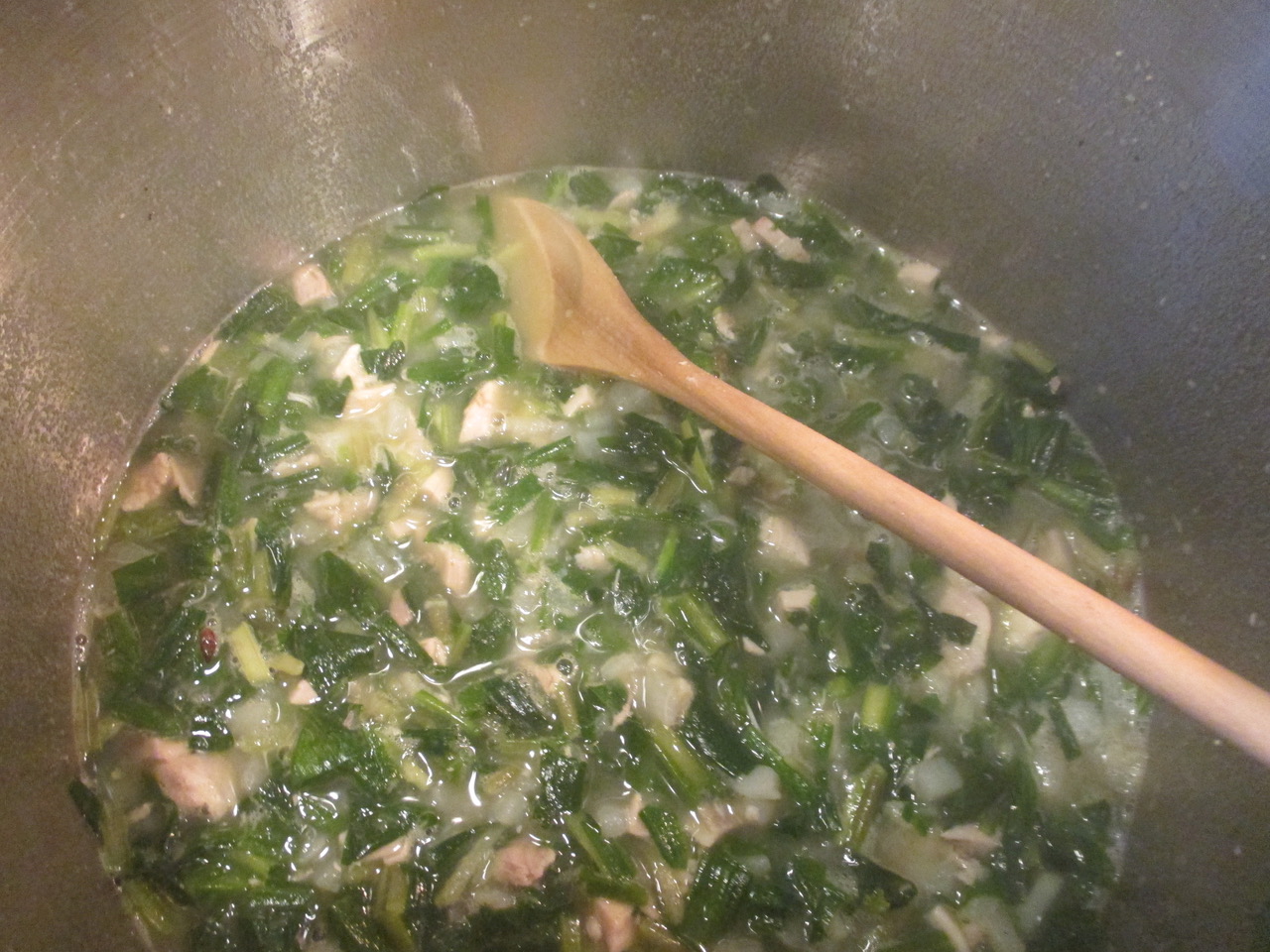
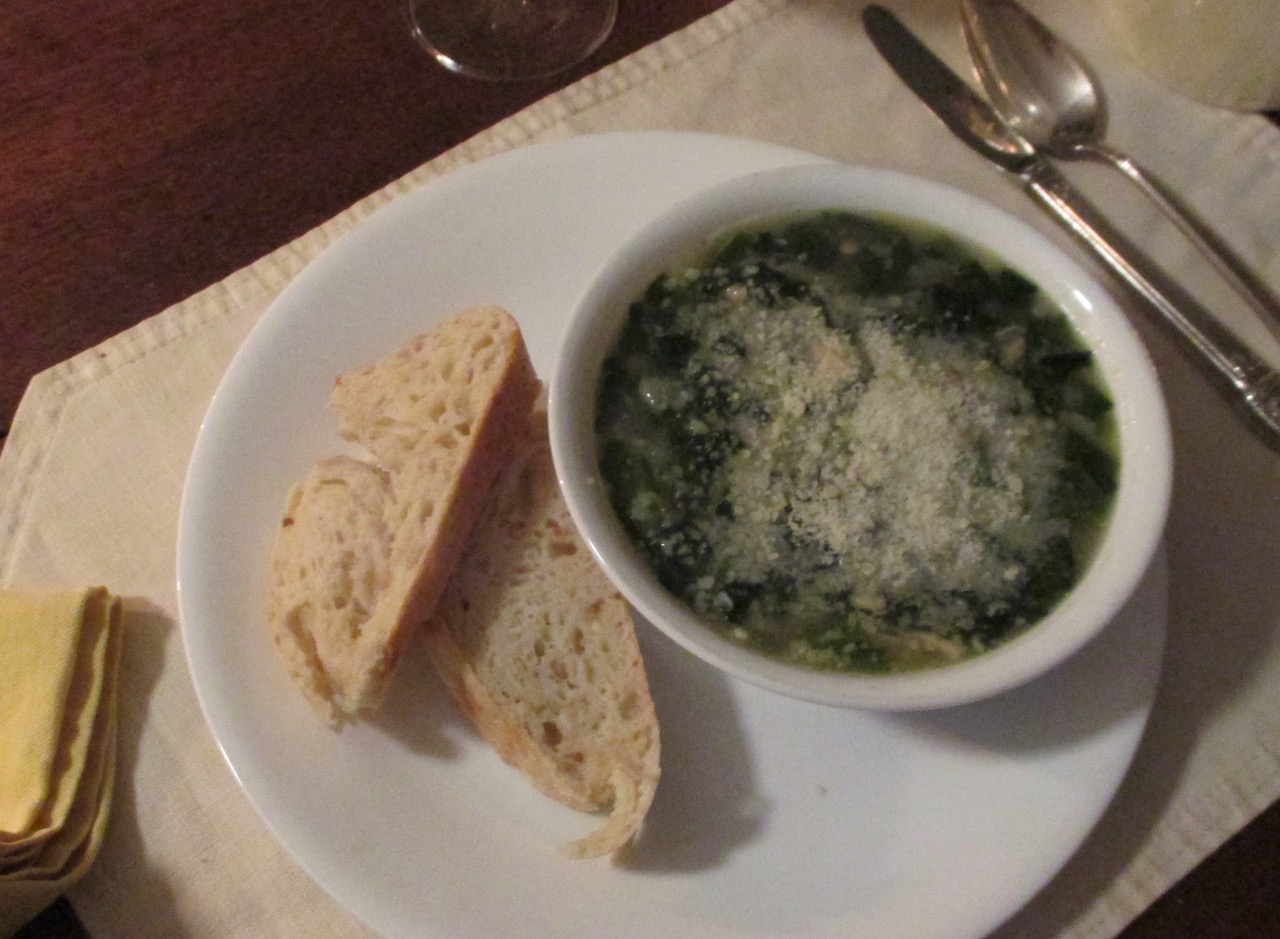
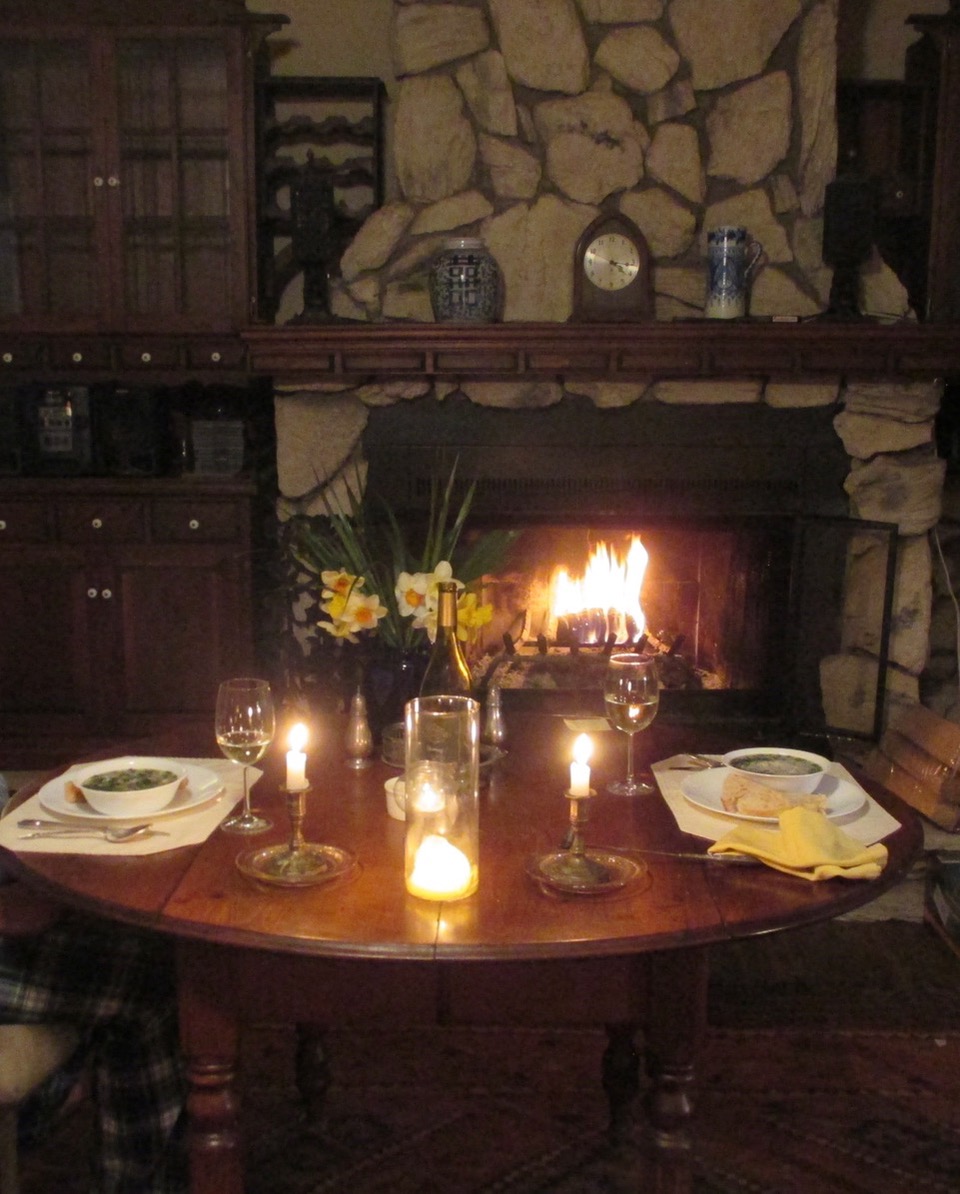
A welcome return to civility after living out of grocery bags for the last 3 weeks!
Robert Lambert

A hundred and forty years ago in a fragrant grove on the Cote d'Azur, potter Eugene Perret-Gentil plucked Seville oranges and cast them, forever, in plaster to make a mold. In a day they would have spoiled, turned to mush, but their ripe imprint endures in the pottery he created to grasp that fleeting life. For 20 years I, too, have sought to secure this ephemeral fruit's essence against the forces of decay. Preserving, as Monsieur Perret-Gentil knew, is the art of buying time.
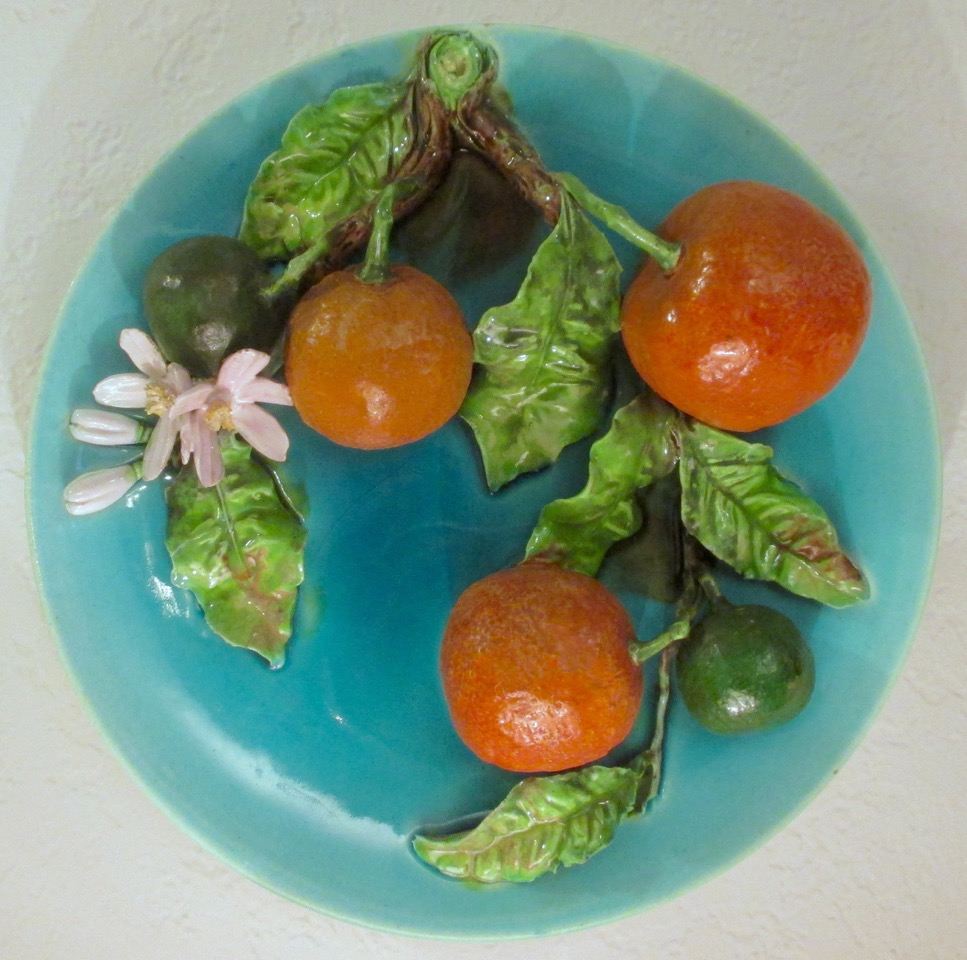
Wall plate with Seville oranges and blossoms, Perret-Gentil Menton, 1880
In the glass case before me was something I had never seen before. This was 25 years ago, and charged with choosing props for chef Hubert Keller's first cookbook, I had cruised every antique and upscale dinnerware store in San Francisco. To match a glorious cuisine deeply rooted in his French homeland I'd found modern Bernardaud china, forks that survived the Revolution, sunny plates from Provencal.
I'd loved glazed pottery since my grandfather rescued fractured figurines at his railroad depot job--a ballerina, her tutu crushed; a dog without its tail. In the 70's I'd started buying vintage California pottery, still to be found in stacks at charity shops and garage sales around my new Los Angeles home. But this fine little compote in the vitrine was different - perfect for Hubert, the exquisitely articulated form, the rich glassy glazes delicious as candy.
Objects in the case were from a couple who would soon open their own shop, I was told, and that the piece I wanted for the shoot was called majolica. A connection formed when I met the Montagnes and I often stopped in their new store, a jewel box of this pottery in all its vast regional glory. Twice yearly they bought in Paris, and I'd sometimes get a seminar as treasures were unpacked.
Most broadly majolica can be any glazed earthenware that isn't porcelain, but that commonly collected is of English and Continental origin and produced by a dozen or so notable makers between 1850 and 1900. The irresistible visual appeal of these objects, from tea pots to garden seats, was calculated to loosen the purse strings of a new Middle Class and satisfy their appetites for luxury and display. In that sense, they were the first consumer rage.
Impossibly ornate, dreadfully fragile and long out of style, a great deal had certainly been lost, but what survived had done so, it seemed, by force of its sheer beauty - fascinating forms and brilliant glazes fresh as the day they were fired. Though I too loved it and learned a great deal, as a free-lance stylist with a sketchy income buying even one piece at that time was beyond me; I was simply grateful for the Montagne's generous indulgence of my appreciation and thirst for knowledge.
Last November I decided I would no longer deny myself this pleasure. Scanning thousands of images, I awaited the flare of desire to reveal the handful of pieces that would slake my ravenous eye. A classic French Palissy majolica wall plate crawling with creatures and a particularly charming frog was the first to give pause, as I succumbed, gratefully, to majolica fever at last.
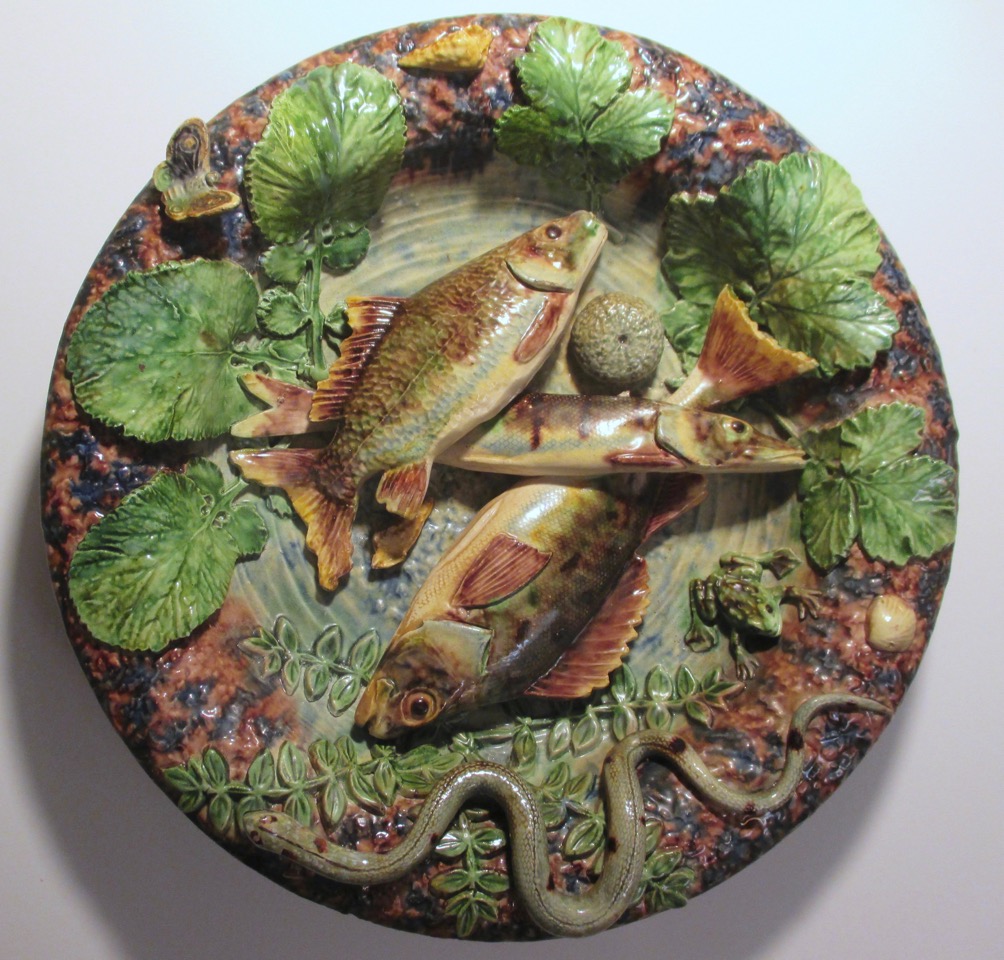
Palissy means 'in the manner of' Bernard Palissy, a 16th century French Renaissance polymath and potter. Though little he actually made remains outside museums, much was later done in his name. Drenched in moss, seaweed and ferns, teeming with fish snakes grubs eels moths lizards and all manner of uncomely creatures, these 19th century copies would in time come to be known as simply "Grandma's ugly plate." At the time, however, a fascination with living things made these grotesqueries the height of fashion. Today their natural forms - molded from real plants and animals - look startlingly timeless. This 11" Barbitone example from 1890 evokes a tide pool with stranded fish, sea urchin, snake, welks, sea plants--and that little frog, so eager and beguiling.
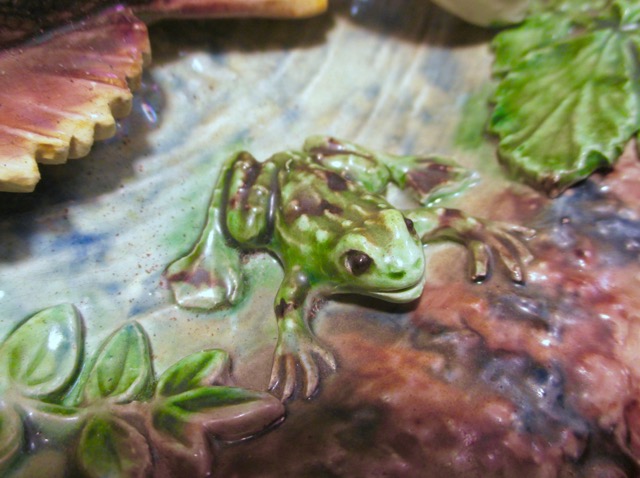
Then, from Sweden, another watery world--Gustafsberg compote with cranes, bulrushes and lily pads, 1885. The poised and elegant birds, the way the cattails come up through the top and fan across the plate is simply wonderful. Glazing is stunning, two others of this form (they apparently bootlegged each other's molds), one English and one French, could not compare. Note: if you find 19th century art pottery at a dealer whose other wares consist of a Star Wars video game, a box of blank cassette tapes and a Hallmark commemorative Easter egg, you may get a good deal.

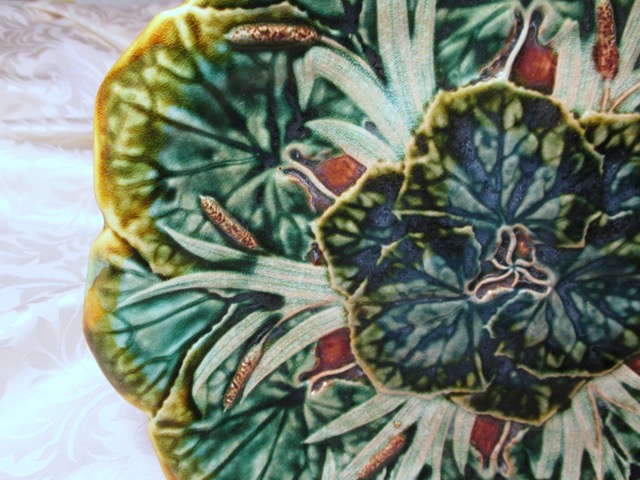
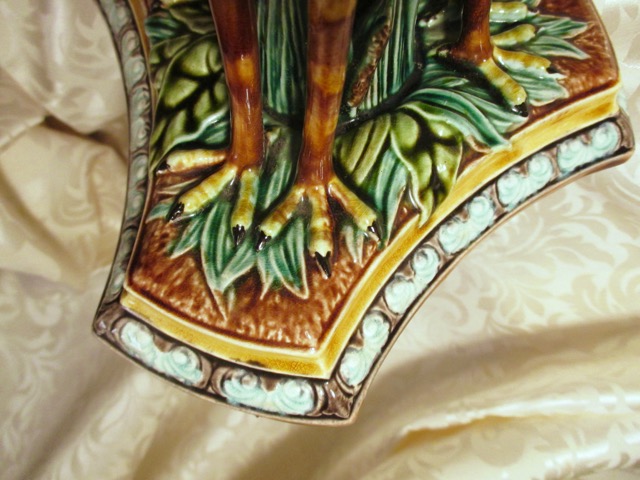
A detour back to France for the Sarreguemines works and a bird jardiniere from 1890; I use it as a lantern, and it casts a lovely light. Dealer acquired it recently at a family estate near Nancy, where it apparently slept for the last 100 years. Seen this mold elsewhere as well, but without the piercing and glazed mostly in brown. For 30 years I had a parrot and I love handling birds; this creature is modeled and glazed so beautifully, I can feel it flutter in my hand.

From there to the world of Hugo Lonitz and Julius Strnact. These Eastern European potters borrowed from the vernacular of Black Forest carvings --all lizards, caterpillars, birds, fruit, leaves and flowers. Huge Lonitz mirror frames have survived, and candelabras that sell for many thousands. Never heard of him when I found this tree trunk jardinière, lined with his signature robin's egg blue, 9" high, made about 1890. A smaller vase fits just inside, and it's fabulous with flowers!

More tree trunks from Bavarian Julius Strnact - vases draped with voluptuous apples and pears that remind me of making my Spiced Crab Apples and Pear Ginger Jam. The pear vase was $12.50, plus auction fee; there were no other bids. It's missing a fruit and leaf, but those are being re-cast and repaired. Both 15" high, about 1900. Startling form, striking colors - that acid green!-and the ridiculously fragile stems make me smile.
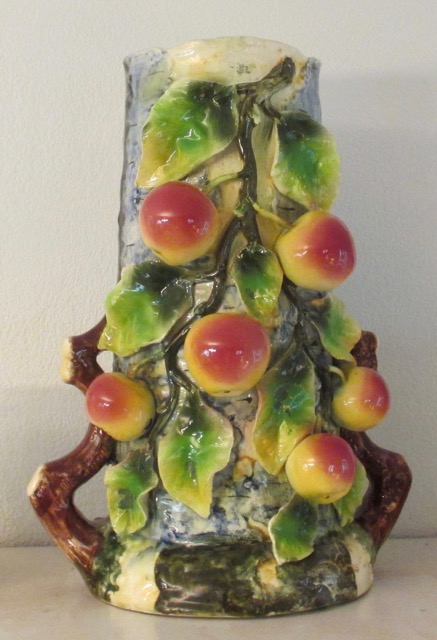 |
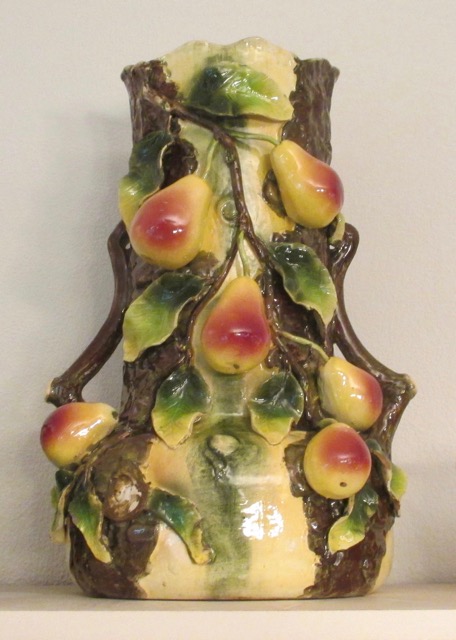 |
No majolica collection, however crude, could stand without an English example - Wedgwood, Minton, and, when they left for their own firms, Joseph Holcroft and George Jones. For all of them the dazzling rigor of craftsmanship is unmatched, the rich saturated glazes stunning, but for me, too tight, too pretty, too formal - until I saw this piece.
The courtship lasted several weeks; I visited daily and lavished my attentions before deciding I couldn't let it go. Only later did I discover its rarity and how much real collectors covet it; it was just the most beautiful plate I'd ever seen. Great condition, early crisp mold, a swirl of scattered leaves that never quite repeats itself in glazes of gorgeous color. The oldest piece, I can only wonder where it's been as I'm humbled to provide its next home. George Jones palm frond and banana leaf plate, 9 1/4", 1875.
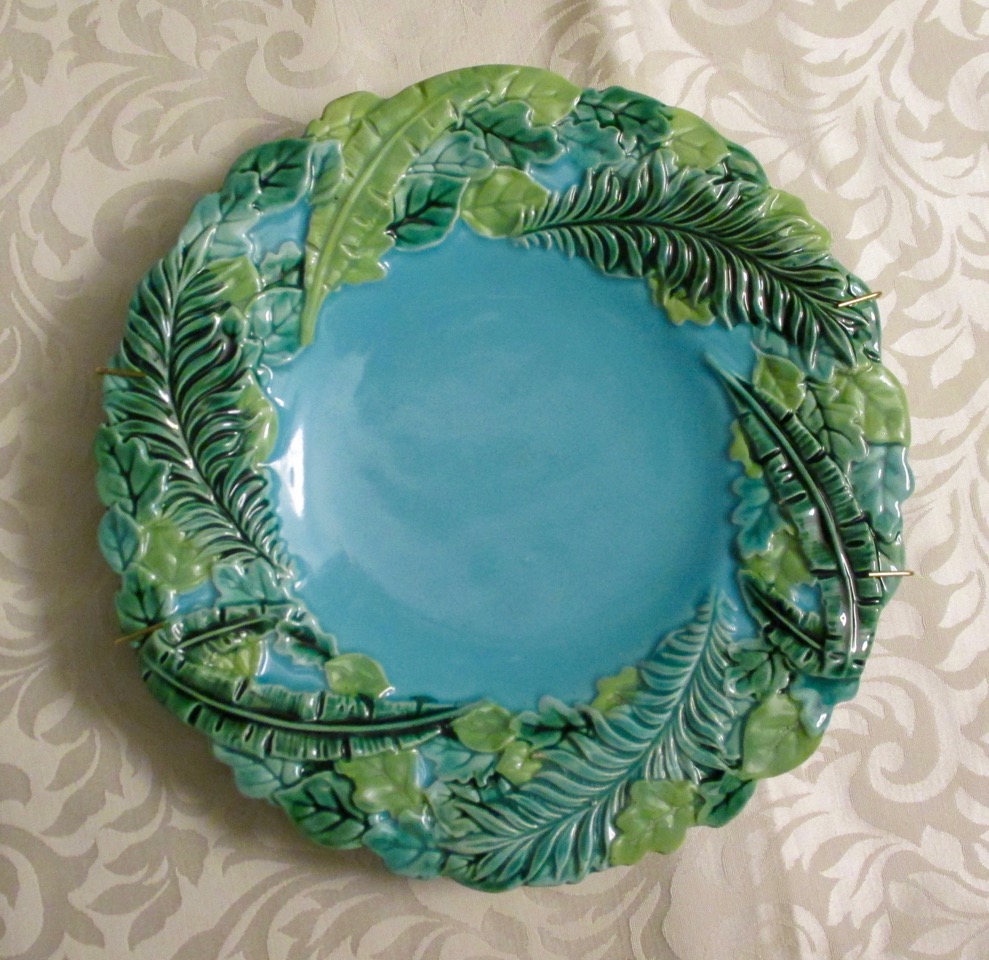
In the 1870's Grand Hotels rose along the French Riviera as holiday lodging for wealthy Victorians. A festival in Menton celebrated citrus groves that had flourished there since the Greeks, and artisans fashioned souvenirs of the sun-drenched orbs for their guests to pack home in their steamer trunks. Of those potters, Eugene Perret-Gentil Menton stands alone, their best efforts breathtakingly realized.
In the end it was these works that touched me most of all - every time I found a piece my eyes went back for more. The citrus fruit and ornate blossoms, so real I can smell them, aim straight at the heart of my work. One look and I'm on the Cote d'Azur - or the hills above Watsonville at Gene Lester's ranch, the Pacific Ocean gleaming below. Monterey, miles off, stands in for San Tropez; brilliant fruit and perfumed air hang heavy all around.
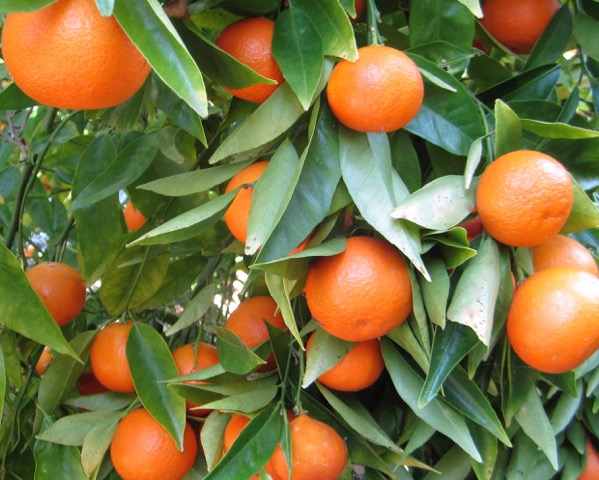
Already I'd found small Perret-Gentil Menton wall plaques when I came upon the Mother of them all. Rare even in its time, its survival unscathed is nothing short of miraculous. A branch of Lisbon lemons, a branch of Seville oranges, with leaves and showers of buds and blooms, 16" high, 1885. I can't look away, and am honored to be its custodian for as long as we both survive.
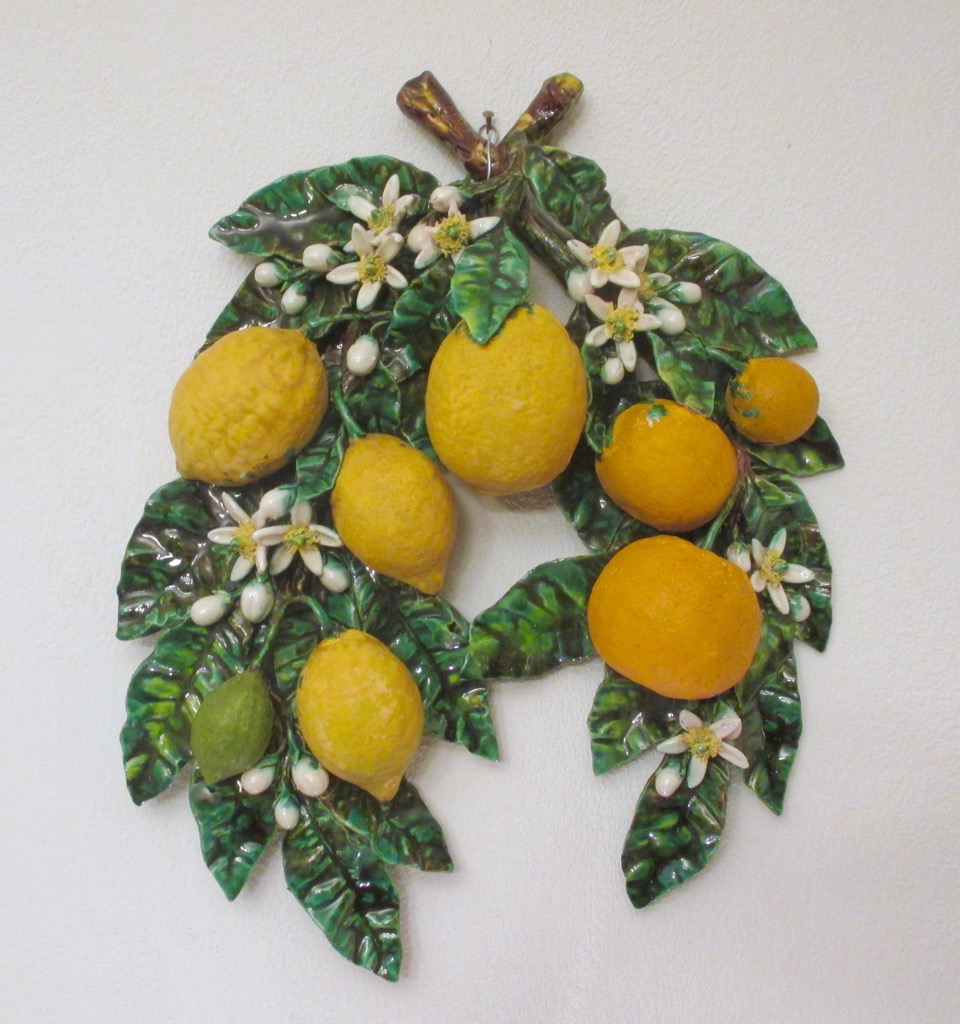
The first Perret-Gentil piece I'd noticed wouldn't leave me, however, and would, in the end, become the last. Posted for months - upside down - it was damaged, but at 16" this rare 1880 P-G Menton wall plate was monumental and stunning. A branch of black and green olives, a branch of Meyer lemons, its buds streaked faint pink, all set against the deep turquoise ground of a Mediterranean sky. Finally a steep cut was accepted to replace the missing petals. And so for 20 year's service to citrus am I presented with the Limon d'Or Award - just as the tourist who first took it home, a holiday on the Cote d'Azur at a glance, and right on my kitchen wall
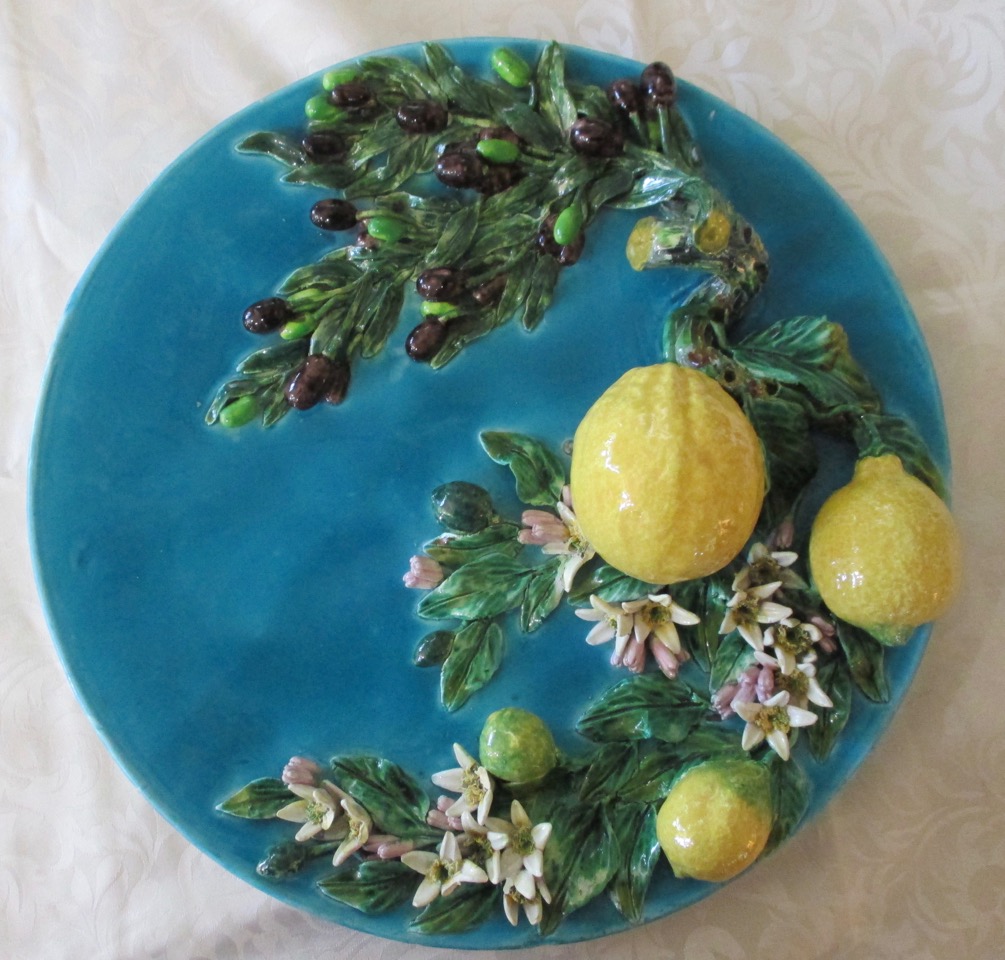
Robert Lambert
Calistoga, CA
March 2020
Farm Storm
Often during my evening calls to Mom in Wisconsin I get news of my brother Jim at the farm, he calls right before me. On Friday July 19th she said "He's all upset about some storm coming, he couldn't even talk." It hit few minutes later. Not a tornado, not a hurricane, some huge temperature shift caused 100-mile an hour winds to tear across a broad swath of Langlade County. No deaths and it was over in ten minutes, but left hundreds of acres of forest flattened in its wake, and its effects will last for decades.
At Post Lake, a beloved family resort area for over 100 years, 40 percent of the homes were crushed by fallen trees and will have to be demolished. The biggest trees got hit the hardest, uprooted, big dirt discs thrown up like tombstones. It took the last of the old basswood trees in front of cousin Arnie's place across the road, and at the Olsen's further down a long row of tall pines I can't remember ever not being there fell across the length of their driveway.
At the farm, the house sustained no damage - no big trees to the west of it. But nearly the entire western wind break Jim started planting 50 years ago is gone, a large oak damaged the garage, and all the big yard trees from the barn to the garage are snapped off or toppled.
before

after
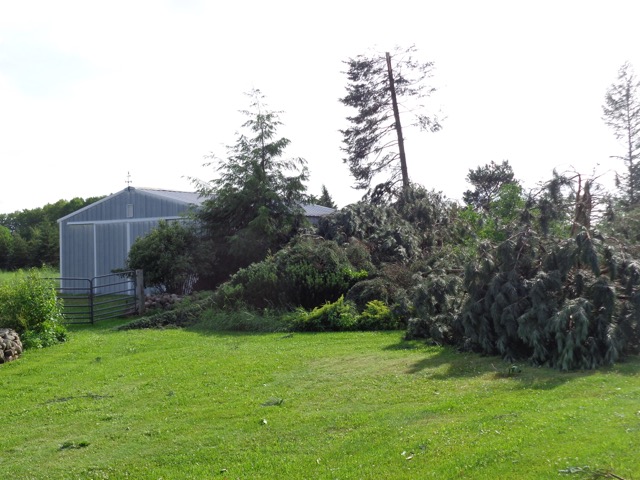






The forest is decimated - mainly the tallest, oldest oak and maple last logged in the 1940's. He's been unable to reach the lake to see how our beloved swimming hole fared as the fallen are jumbled like jackstraws, but quite sure it will never be the same in our lifetime. The logger he's contracted to salvage the timber says he has a thousand acres to clear, another says clearing his own hundred acres will take until next year.
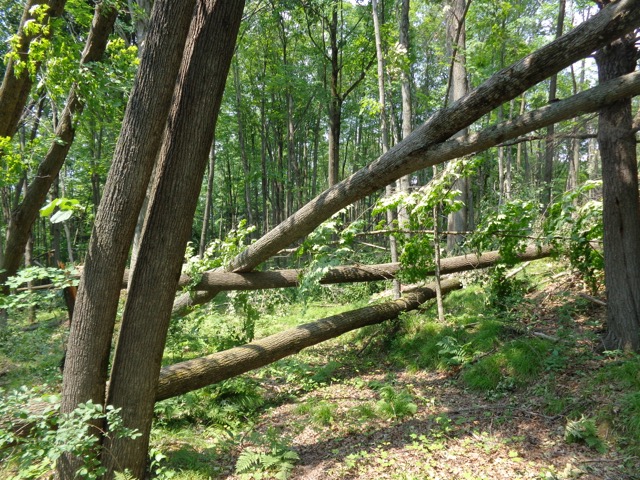
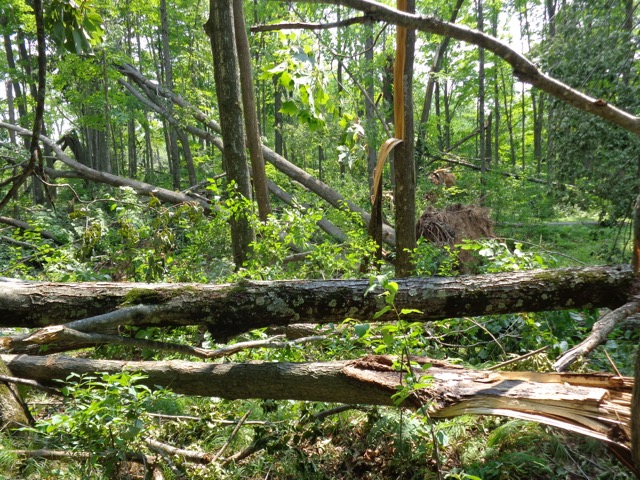
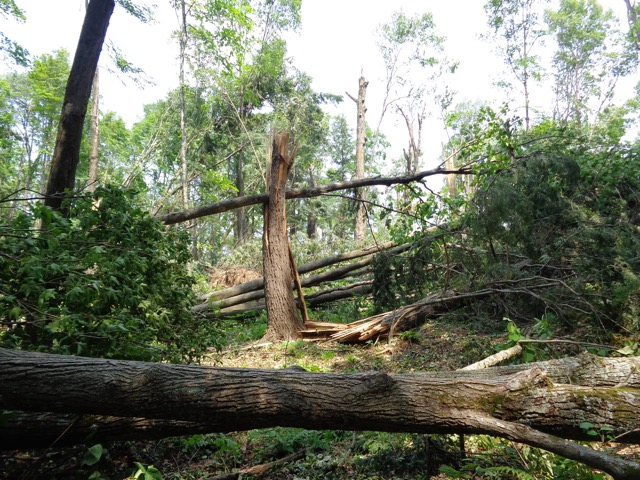
To add injury to insult, Jim was pulling a loose branch down from a maple when it twisted and threw him--landed on his hand and broke his wrist. He now has one arm, lives alone, has a forest to salvage and acres of gardens and grounds to maintain and prepare for winter. Three months before he can use his hand again, a year to full recovery.
In the spring of 2018 I talked to my sister about our annual summer plans to meet at the farm, but our Dad was already in decline. "To be honest, those days are over," she said, and indeed they were; he died at 97 on that 5th of July. This year Mom had just gotten out of the hospital and was too infirm to make the trip north.
All those years of summer projects with Dad, building the deck, the pergola, installing the woodwork on the back porch, his grill-roasted chickens, picking cherries with Mom, cooking, baking and making jam, enjoying for a lazy month the front porch swing, forest walks, the lake, the manicured grounds. 20 years, 30. It seemed it would go on forever. It couldn't.
before

This was the worst storm ever to hit Elcho, conditions have simply never existed before that would have caused such a thing to happen. Those days are over, yes. Nothing will ever be the same, yes. Jim's neighbor across the road put it most clearly - "The beginning of the end of the world." As I knew it.
Robert Lambert
September 1, 2019
What A Fungi!
|
This property continues to deliver amazing surprises - over the course of 2 days one of our many dead madrone trees sprouted the most beautiful bracket fungi I've ever seen... |
|||
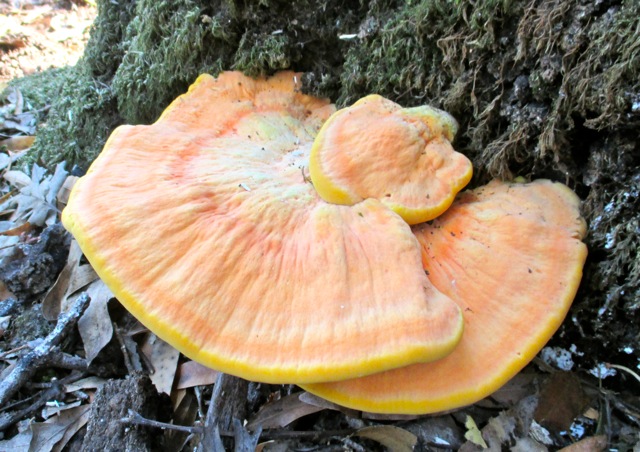
|
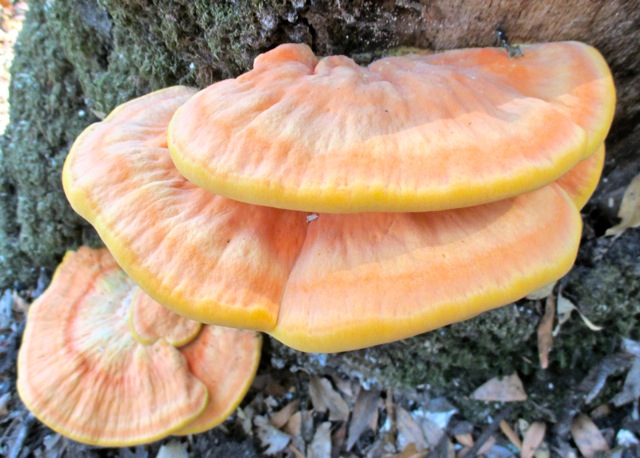
|
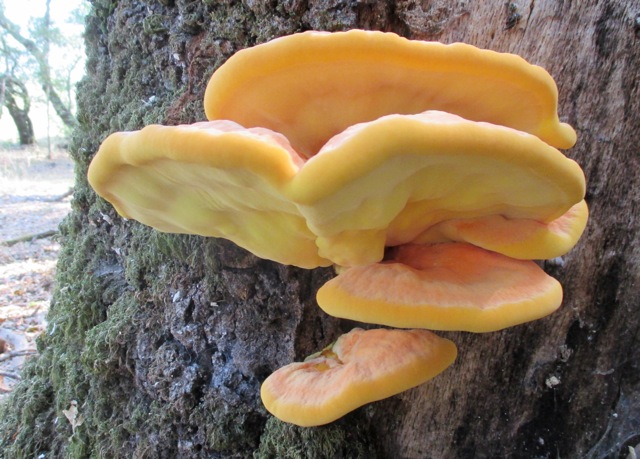
|
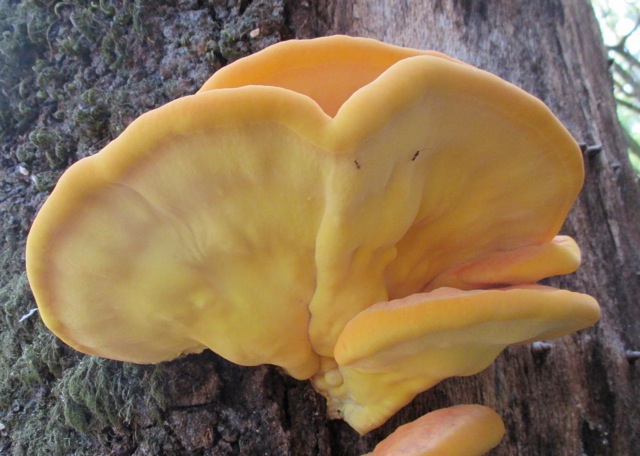
|
Strange Fungi
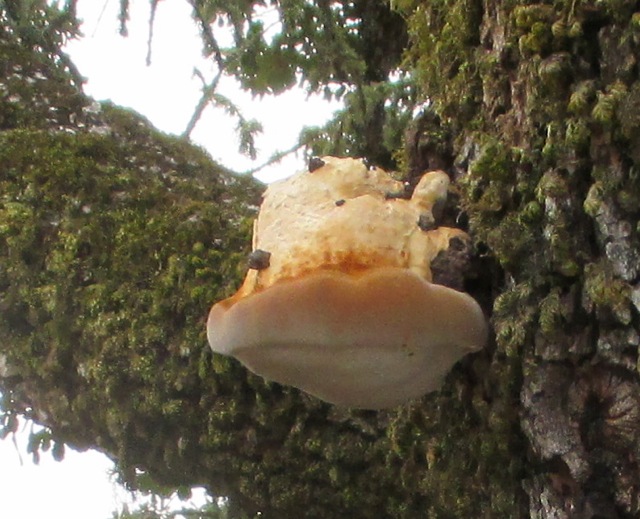
This bracket fungi showed up on an old oak next to the driveway - I've never seen anything like it and looked online but couldn't find anything similar, the bracket with that huge poof on top, really remarkable. There was an old one on the tree when we got here, all darkened; I heard a loud POP while I was out there one day and it had exploded, pieces of it were all over the ground...!
The Colnik Latch

Nearly 50 years ago a fire gutted an East Side mansion in Milwaukee, taking the life of its reclusive elderly occupant. Long forgotten at the time of her death, she had been one of the first female architects in the country, had a successful career and had designed the home where she died.
Free-lance salvagers descended on the property to save what would surely have been destroyed in those days - there were reports of antique dealers throwing Chinese tapestries out the attic windows, of carved fireplace surrounds and stained glass. My brother stopped by and came away with this latch forged by noted Milwaukee metalworker Cyril Colnik.
The Austrian had arrived in the late 1800's and for many years furnished fences, gates, lamps and balustrades for the mansions of the city's Guilded Age elite - a staircase for a brewing magnate took 3 years. He was known for his fluid, natural forms and life-like detail.
The latch lay in a box at the farm all these years, until my brother had to replace the screen door on the front porch this summer. He finally had a place to use it. Cyril's curled acanthus leaf latch once more opens into a much loved home.
Cyril Colnik latch
Answers to Customer Questions
1. I bought a bottle of your superb lime syrup about 4 months ago & put it in the fridge as you recommend after opening. I had not finished it all nor used it for a while but noticed recently that it developed considerable cloudy precipitation. Is this sugar precipitating out? I gave it a brief period in the microwave and it largely disappeared.
I'd like to buy some more of your syrups & other products but have some other questions first: What is the "refrigerator life" of your syrups? You say you use corn syrup in your syrups. Is this the high fructose type? Do you recommend refrigerating your marmalades too after opening? Thank you.
MM
Good questions all. The refrigeration I recommend is to be safe--say, someone who stores a half-used bottle over his stove for 3 years, then wonders why if anything happens. Most of the citrus syrups contain enough citric acid that they will not go bad in the short term, say 4 to 6 weeks, if left out. Some customers do not refrigerate them at all. I keep a jar of stray syrups out for my tea and it never gets moldy on top, which is all that would happen anyway, but I use it daily.
I sometimes keep syrups refrigerated for years. They can, as you observed, crystalize, but as you also figured out, this is easily remedied by heating in the microwave, just as you would crystalized honey. They can be brought back repeatedly by this method with no loss of flavor or quality. If it's not clear, go a few seconds more.
The corn syrup in the syrups is not high-fructose, but if you are concerned about corn syrup in general I suggest reading food authority Marion Nesbett's article on the subject, the most balanced, considered, and definitive parsing of this controversy: https://www.sfgate.com/food/article/Marion-Nestle-The-facts-about-corn-sweetener-3193753.php
Like all jams, the marmalade should be refrigerated. It can, if kept a long time, crystalize as well, but the same procedure noted above will work for them as well.
My Best,
Robert Lambert
2. Hello - I placed the order below via your website. I didn't see an option in the checkout area to not have the invoice not included, but if it's possible to do that I'd appreciate it -- the order is a gift.
thanks, AB
I took care of that, A! If I see that the Bill To and Ship To are different names, I automatically assume it's a gift and only include that part of the receipt, inside a card, so they'll know who it's from. Thank you for your order!
My Best,
Robert Lambert
3. I'd like to suggest that you consider using compostable vegetable-based 'peanuts' for packing instead of styrofoam ones.
Happy Holidays, AB
Thanks for the suggestion! I know everything about the styro is negative, except for the fact that it works. The starch varieties compress readily against the weight of a heavy object when the box is shaken as it is in shipping, and the product is soon rattling around in the box and subject to breakage. Since the things I'm shipping are glass, liquid and expensive, experience has proved that being well separated and secured with material that keeps its shape is the only way I can be sure they will safely reach their destination--and more ecologically sound than sending it twice, I think. You note I do now use the paper grass on top, but only after the bases have been secured with the peanuts.
Have a Happy New Year!!
My Best,
Robert Lambert
4. To my surprise, the Vintage 2011 Dark Fruitcake didn't get opened this holiday. How long will it keep?
Thanks, R
How long can you wait? It all depends on your appetite! ;-) I've kept one as long as 7 years and it was better than when I made it - so what I'm saying is it's up to you! I've heard of them kept as long as 25 years. Don't freeze it, just refrigerate but make sure it's in a second zip seal bag to keep it moist. I the case of a loooong hibernation, it might require an extra splash of Jack Daniels. Who wouldn't?
My Best,
Robert Lambert
5. I came across your website and wow, your products look amazing! I am also an artisan jam maker, but in the west of Ireland. We don't get all the beautiful fruits you get. I try not to use anything that is not local, with the exception of lemons and oranges. We get oranges, blood oranges if we are lucky and once a year Seville oranges. One type of lemon and one type of lime!
10 years ago a butternut squash was unheard of! I grew up in Africa, and let me tell you it took a lot to get my head around the lack of choice in the fresh produce section when I moved to Ireland. It is much better now, but still not near what there is in your part of the world or even in the rest of Europe. Ahh well I digress.
I was browsing through your website and came across this picture... please will you tell me where you got this sieve or what it is called so I can look online to find one. I use a small normal sieve and oh this would make life so much easier!
I make a lot of elderberry jam, and let me tell you this would be a Godsend!
I laughed too hard when I read your bit about pectin! I get asked that question... UMMMM you need pectin to set, and if a fruit does not have enough pectin to set, then you will have syrup, not jam! I also make my own pectin with the orange seeds, but make a lot with reduced apple juice from my apple trees in the garden. I freeze it in muffin tins, then put the frozen pectin muffins into zip lock bags. I have read a bit about a pectin called pomona's pectin, have you used it? It is not available here in Ireland, but I have been thinking about getting some to experiment with.
Thanks for taking the time to read this, look forward to hearing from you.
Regards M
So funny that I'd read this upon returning from visiting my parents in Wisconsin over the holidays. Even the all-seeing internet can't bring you that amazing device - I designed it with my 92-year old Dad, and he built it! This visit I had him build a rack for my 2-piece jar rims, I re-use them for my boiling water baths, always wanted an orderly place to keep them when not in use - and now I've got it! He made my bottle filler as well. I know, I'm very lucky. I've forwarded your message to him. He will love this. Here's a shot of him cutting the plugs to hold the columns in place for the new piece, on his lathe - and it was 23 degrees in the garage!
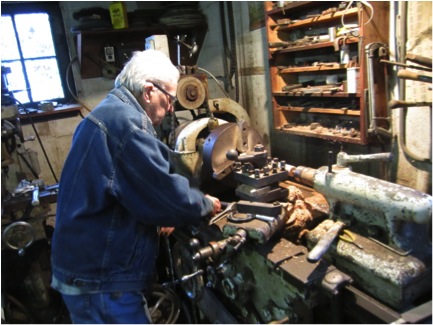
Yes the pan strainer does make life so much easier. Ideal for all kinds of berries, and if I take out the fine screen to prep small plums, it lets the skin & guts thru but holds back just the pits - heaven! One thing you'll never find is the screen, though, just fine enough to hold back every last raspberry seed. It's a very large piece of fine industrial stainless mesh screen for instruments, from one of Dad's last business contacts. Not something one can go out and buy. I have a nephew who's the manager of a chemical plant near Boston, and he couldn't get us any.
Besides the pectin I make, I use a French citrus-derived import that is available only to the trade, and wildly expensive, but worth it.
Delightful to hear from you! Mom says Dad's not got much to do this time of year, perhaps we can coax him back into the shop! ;-)
My Best,
Robert Lambert

